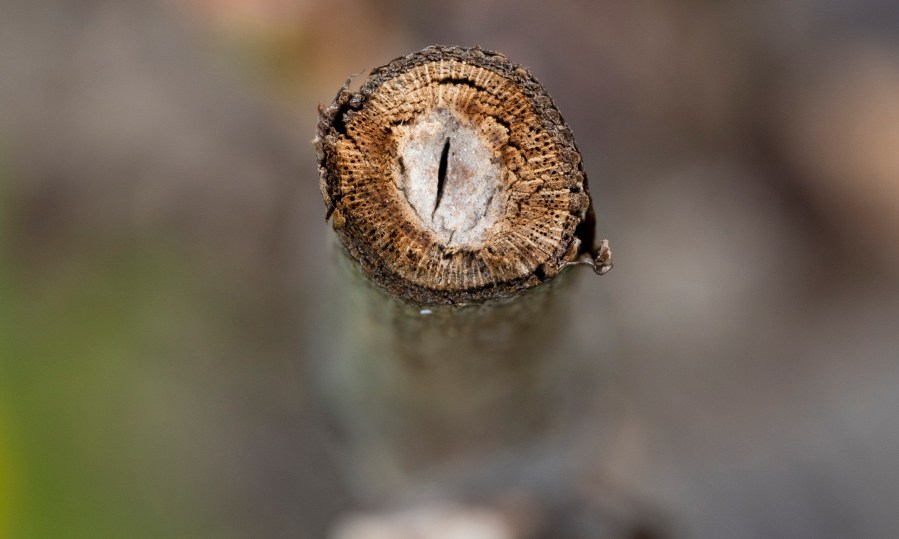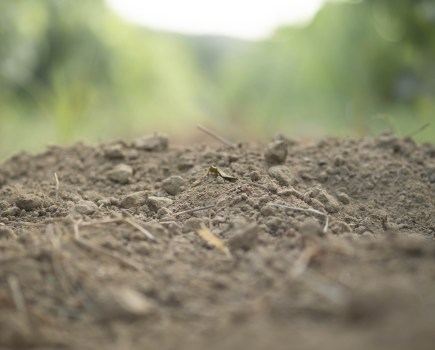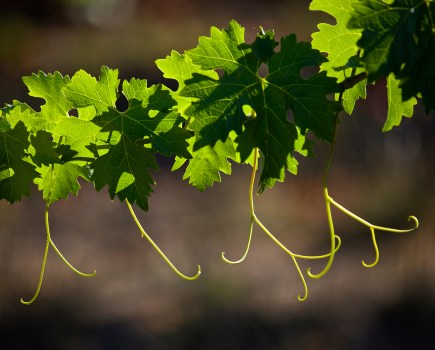Winter pruning is the main period for grapevine trunk disease infection, so as the New Year begins, Hutchinsons agronomists Rob Saunders and Will Robinson explain how to manage the risks.
Grapevine trunk disease is a catch-all term for a plethora of diseases, the most common being Esca, Eutypa, Botryosphaeria, Petri disease, Black-foot, and Phomopsis.
Each has different symptoms and is caused by different pathogens; some have more than one. Esca (Black Measles), for example, is associated with three fungi species, and is characterised by dark red or yellow stripes on leaves and a shiny tar-like substance that oozes from wounds; Eutypa lata infection can lead to stunted shoots and yellow, distorted leaves; while Botrosphaeria dieback (caused by Botryosphaeriaceae fungi) can lead to ‘dead arm’ dieback and wedge-shaped staining in the vascular system in the trunk and cordons of older vines.
While there are many different types of trunk disease, they are similar in how they infect vines, before going on to kill surrounding tissue and reduce/stop the flow of water and nutrients in the plant’s xylem and phloem.
Once infected, there is no treatment, although healthy vines will be better at living with disease than stressed plants, and the vigour of Piwi varieties offers more tolerance than most traditional cultivars.
Either way, the aim is to prevent, or at least reduce infection risk in the first place by following five simple steps.
1. Prune when dry
As with most fungal diseases, humid, wet conditions exacerbate risk, and can trigger spore release from old, infected wood, so prune in cold, dry conditions wherever possible.
Pruning in the rain also increases the risk of fungal spores splashing into the air and landing on new material to infect.
2. Avoid large cuts
Bigger cuts present a larger surface area for spores to land on, germinate, and colonise surrounding wood, so try to avoid cutting into wood more than two years old, or larger in diameter than a five pence piece.
Equally, minimise the number of cuts made to limit potential entry points for infection. The ideal is four cuts; two to remove old canes, then two more to make next year’s spurs. Summer shoot selection can be beneficial, as dry conditions and active growth support rapid healing, reducing trunk disease risk. It also helps with general canopy management too.
The Simonit & Sirch Pruning principles offer useful advice for sympathetic pruning.
3. Leave a stub
When pruned, vines do not callus like trees, instead they form a ‘desiccation cone’ of dead wood inside the plant where vessels supplying the removed wood close.
Leave a stub of at least 1cm when pruning to maintain continuity of sap flow in the remaining stems.
4. Tag affected vines
Trunk disease symptoms can be hard to identify in winter, so remain vigilant throughout the season. If you see vines showing symptoms during summer, label them so they can be managed and pruned appropriately that winter.
It may be possible to salvage an infected vine by cutting back into healthy wood below the infection and re-growing a replacement from a healthy shoot from above the graft.
5. Keep it clean
Cleanliness during pruning helps minimise the spread of disease from one vine to the next, so if practical, disinfect secateurs and other pruning equipment after every vine.
This could be as simple as a pack of wipes or a spray bottle, but there are also secateurs available with built-in blade disinfection after every cut.
Even if it is not practical to clean after every vine, it would be false economy not to clean after pruning a tagged vine that was seen to be infected in the previous season.
All disinfectants that claim to kill 99.9% of bacteria and viruses will work.
For more like this, sign up for the FREE Vineyard newsletter here and receive all the latest viticulture news, reviews and insight




